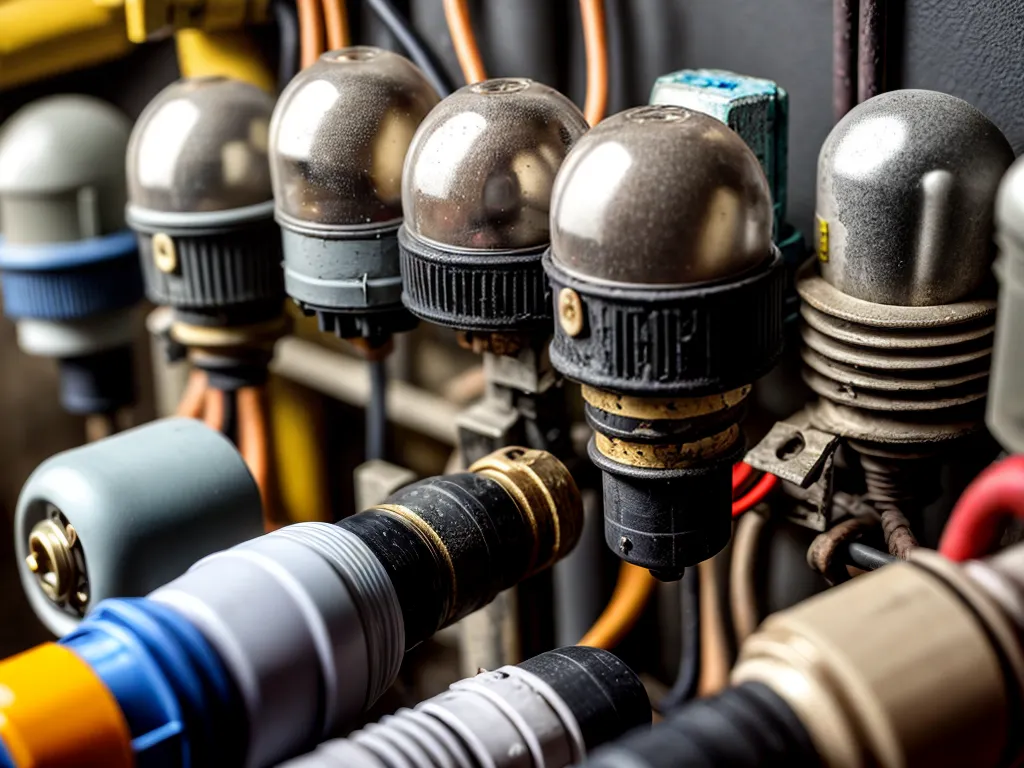
Vacuum tubes were once integral components of radios, televisions, and other electronic devices, but they have since been made largely obsolete by smaller and more efficient solid-state transistors. However, creative engineers and hobbyists have found some novel ways to repurpose vintage vacuum tubes to enhance and protect electrical systems in homes and businesses. Here's an overview of how obsolete vacuum tube technology can be adapted for use in improving electrical wiring.
Understanding Vacuum Tube Basics
To grasp how vacuum tubes can be applied to electrical wiring, it helps to understand what they are and how they work.
Vacuum tubes are glass enclosures that contain metal elements under a vacuum. They can control electrical currents and act as amplifiers or switches. Some key vacuum tube components include:
- Cathode: Heated filament that emits electrons
- Grid: Mesh screen that controls electron flow from the cathode
- Plate: Metal anode that collects electrons
Electrons flow from the cathode to the plate through the grid, which makes it possible to amplify signals and switch current on and off. This gives vacuum tubes useful properties for managing electrical currents.
Leveraging Vacuum Tubes for Surge Protection
One way vacuum tubes can enhance wiring is by providing surge protection against voltage spikes.
Transient voltage spikes are momentary bursts of excess voltage that can damage electronics and appliances. They are often caused by lightning strikes or fluctuations in the power grid.
Vacuum tubes can act as simple crowbar protectors that short out excess voltage before it reaches sensitive equipment. When voltage exceeds a certain threshold, the vacuum tube conducts heavily, diverting the surge current and limiting the voltage.
Placing vintage vacuum tubes at the service entrance panel provides whole-house protection from surges entering through power lines. Tubes can also be used to safeguard sensitive electronics from surges propagating through premise wiring from other parts of the house.
Using Tubes for Voltage Regulation
Another application for vacuum tubes in electrical systems is voltage regulation - stabilizing voltage at a desired level.
Mains voltage from the utility company can fluctuate above or below 120 volts depending on load conditions. Prolonged under- or over-voltage can decrease the lifespan of bulbs and motors.
Vintage voltage-regulator tubes, like the VR-150, utilize gas-discharge properties to maintain a steady voltage output regardless of minor fluctuations on the input side. Installing a vacuum tube regulator at the service panel or outlet box can hold voltage consistently close to 120V to prevent damage to connected equipment.
Constructing Tube-Based Amplifiers for Signal Boosting
The amplifying ability of vacuum tubes can also be harnessed to build signal-boosting circuits for improving electrical wiring performance.
Weak Wi-Fi signals in a house are often caused by losses and interference as the signals pass through long runs of powerline wiring. Tube amplifiers inserted where the main coaxial cable feed joins premise wiring can strengthen Wi-Fi signals distributed throughout the house.
Vintage triode tubes like the 6DJ8 effectively amplify high-frequency signals when paired with the proper tuned circuit components. Constructing a tube-based RF amplifier requires specialized skills, but provides an alternative to Wi-Fi range extenders for boosting the reach of wireless networks through a home's existing electrical wiring.
Important Safety Precautions
While creative applications exist for obsolete tubes, keep in mind:
- High voltages - Always discharge capacitors and use caution when working with bare terminals.
- Proper wiring - Follow established wiring diagrams to avoid shocks or damage.
- Limited power handling - Ensure tubes are rated for expected voltage/current loads.
- Fire hazards - Faulty wiring can overheat tubes; install appropriate fusing.
With prudence and proper precautions, outdated vacuum tube technology can impart useful benefits and retro charm to modern electrical systems.
Hopefully this overview has provided some ideas on novel ways to utilize the unique properties of antique vacuum tubes for enhancing electrical wiring and protecting connected equipment. With some creativity and caution, those dusty old tubes gathering dust in your attic can find new life improving the function and reliability of your home's electrical system.